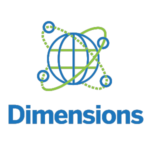 Our first article in the series Complexity Works! with HR Strategy, provides a context for exploring HR Strategy through the Complexity Space™ Framework (CSF). As the primary function within an organization that focuses on the values, processes, policies and programs that are touched by people, HR is a guardian of the behaviours that are embedded in the system-wide patterns (Ecosystems) of the organization.
Our first article in the series Complexity Works! with HR Strategy, provides a context for exploring HR Strategy through the Complexity Space™ Framework (CSF). As the primary function within an organization that focuses on the values, processes, policies and programs that are touched by people, HR is a guardian of the behaviours that are embedded in the system-wide patterns (Ecosystems) of the organization.
Adapting your recruiting process to emphasize analytics and digital efficiency is only one part of finding the right person for your organization. With the Complexity Space™ Framework (CSF) you are encouraged to add another perspective when evaluating the results of your recruiting process—results that are influenced by the most enduring pattern-based influences and systems in your organization. It’s all about the View.
To give you an appreciation of what a different view highlights, we will reference each of the Complexity Space™ Framework’s “Ecosystem Dimensions” to answer the question, “What are the patterns that underlie our current recruiting process?” Although this question appears extremely broad, it is often necessary to expand the view as wide as possible.
The four Dimensions of Organizational Ecosystems define enduring, deeply embedded ecosystem-wide patterns that offer a different way to discuss and adapt existing “structures” of your organization.

- History: The organizational system’s traditions and significant historical milestones
- Context: The surroundings in which the organizational system operates
- Culture: Who and what the organizational system is at its core
- Motivation: What was the “attractor” that brought the organization into existence? What is the “glue” that holds it together?
Now that’s a different view
A well respected and financially successful organization had seen the quantity and diversity of potential candidates decrease significantly enough to consider retooling their entire recruiting process. We interviewed a cross section of staff from the HR function and actively hiring business units to help them better understand why that might be happening.
A recurring theme was the physical location of the business. Longer term employees emphasized the benefits of having both challenging work and a desirable lifestyle that outweighed any concerns about geographic location. More recent employees had a different view of location and lifestyle; mentioning the lack of desirable activities and amenities outside of work hours.
The organization’s Motivation to keep the company in a particular place was tied into the organization’s History. The location was selected by the company founders based on considerations of the logistics and operations which were central to the growth of the enterprise at the time the business was established. The Culture of the organization reflects pride in supporting the values and lifestyle supported by their presence in that geographic location. The Context in which the organization operates is also important. Moving from an “uncool” to a “cool” location was not feasible because of economic and competitive constraints.
So what is this organization to do to address the concerns of its younger and potential employees? What does it “sell” to counteract the concerns with geographic location? We helped the organization to see that it could reframe its branding to highlight the positive values associated with the current geographic location. We suggested they highlight values such as safe, family friendly, and affordable. We encouraged them to create sales messages – via their website and social media – featuring young, diverse employees telling their personal stories of overcoming initial scepticism to experience personal and professional growth and work-life balance.
By asking the question, “What are the patterns that underlie our current recruiting process?” the conversations that ensue will lead to new ideas for your recruiting process.
This post is one of several we’ll be creating in the first quarter of 2017 about the applications of the CSF within an organization’s Human Resources and Professional Development strategies. We hope you will share your stories, questions and even disagreements with our articles because that is the only way we can continue to make sure Complexity Works!
